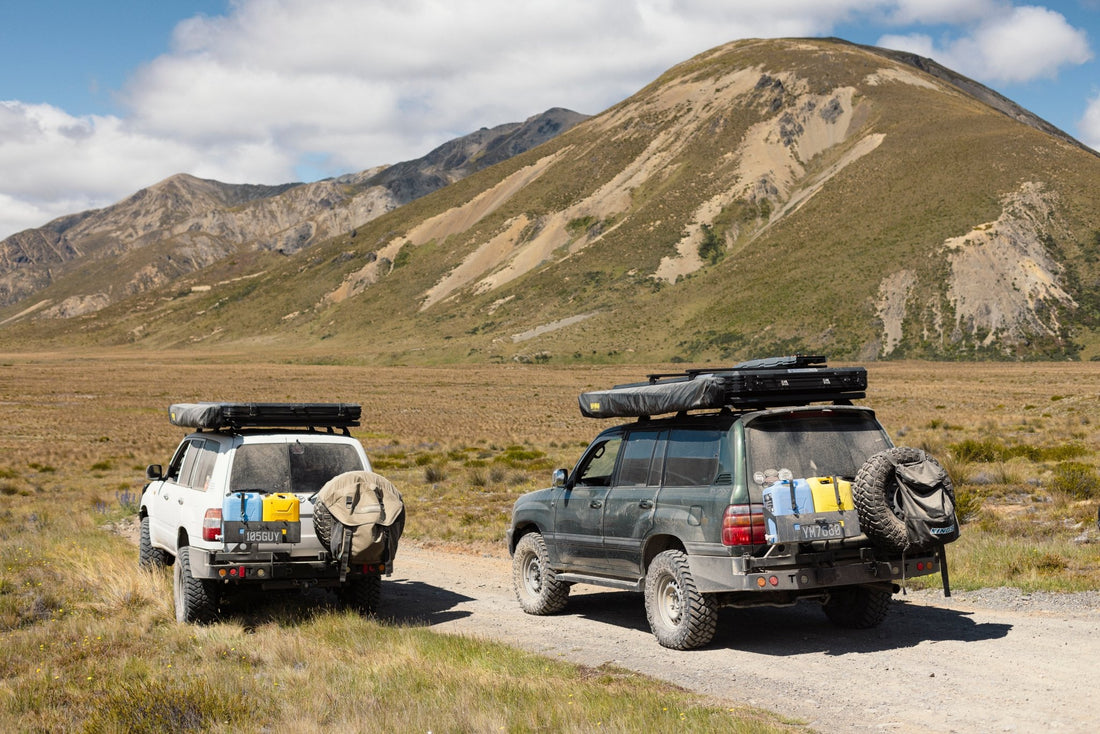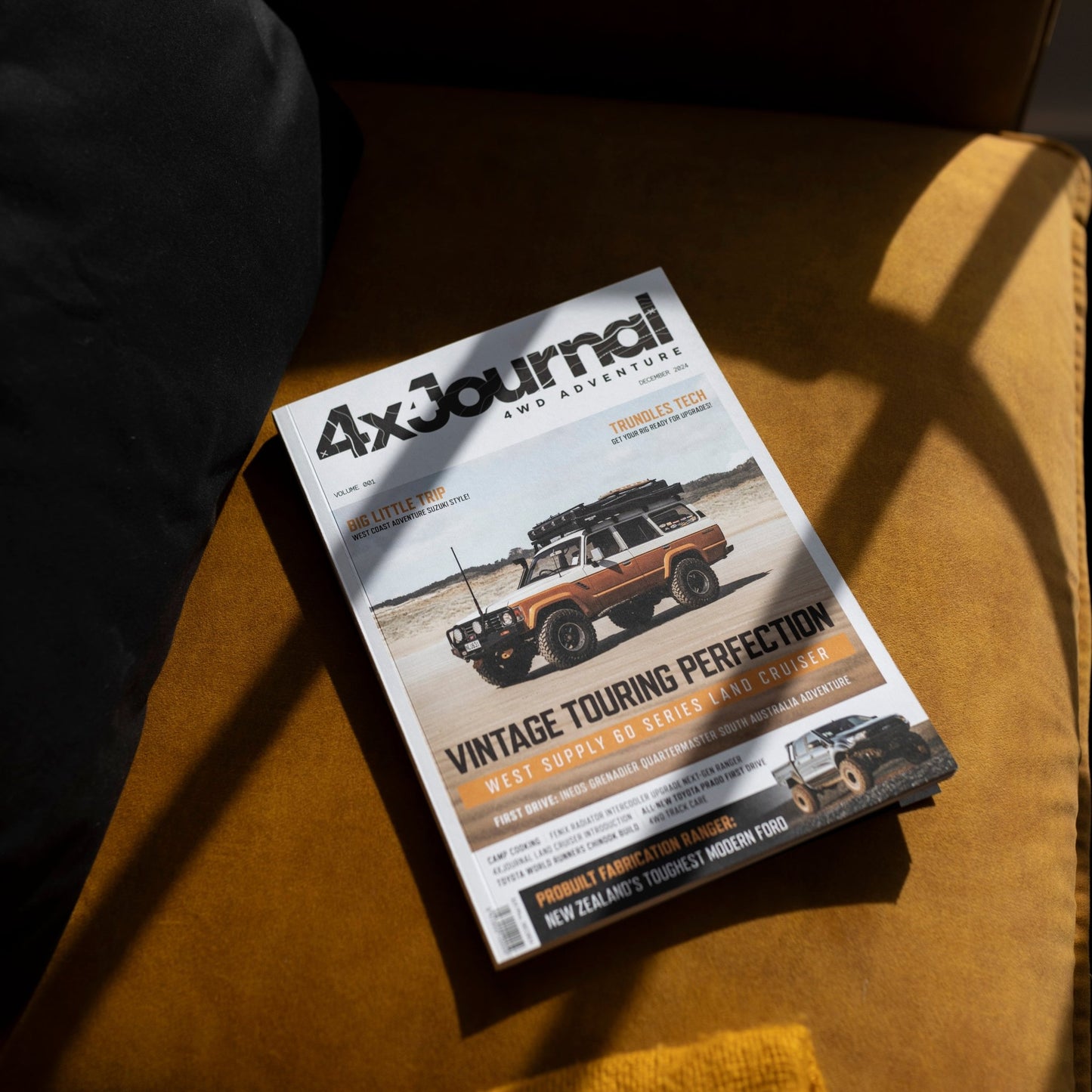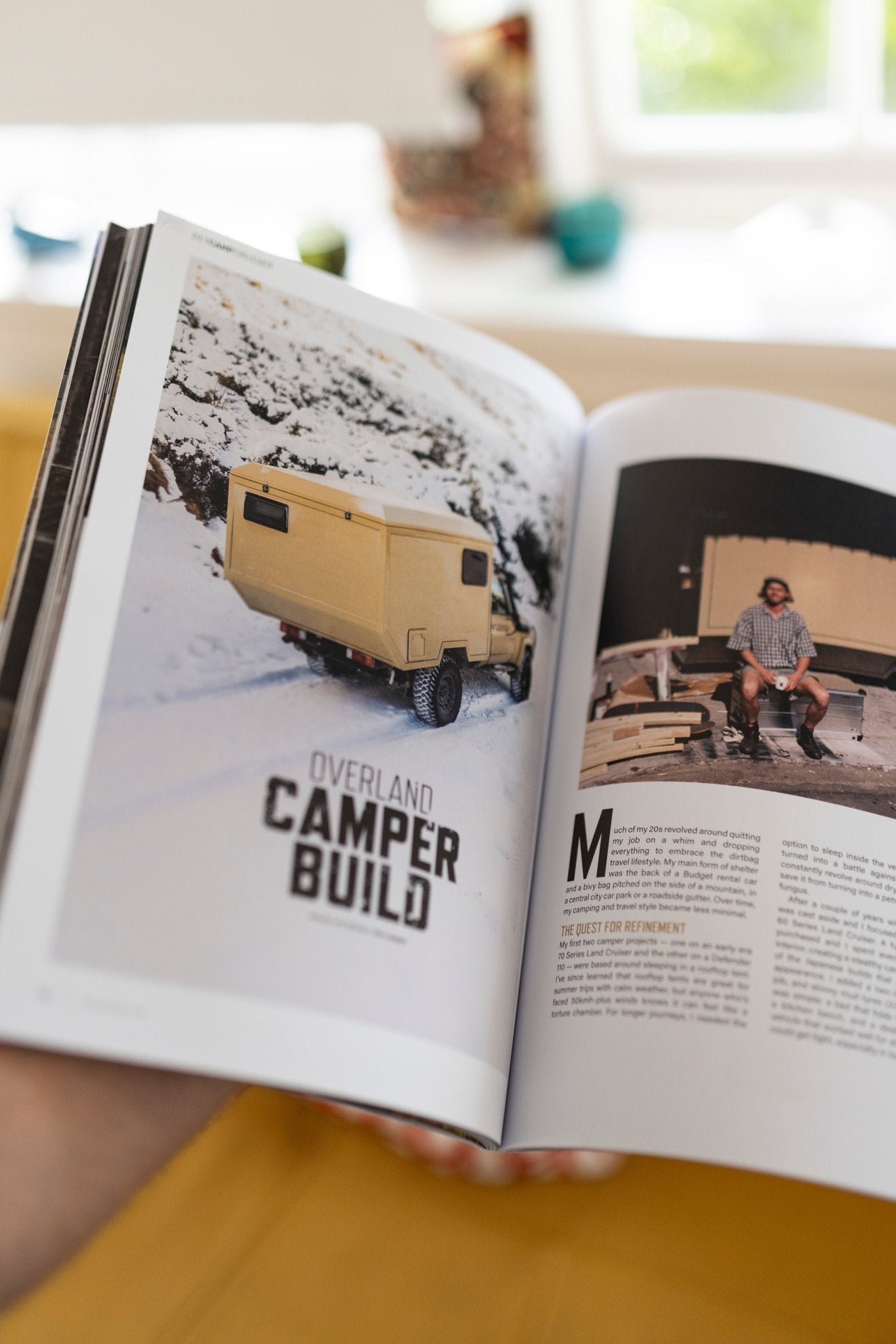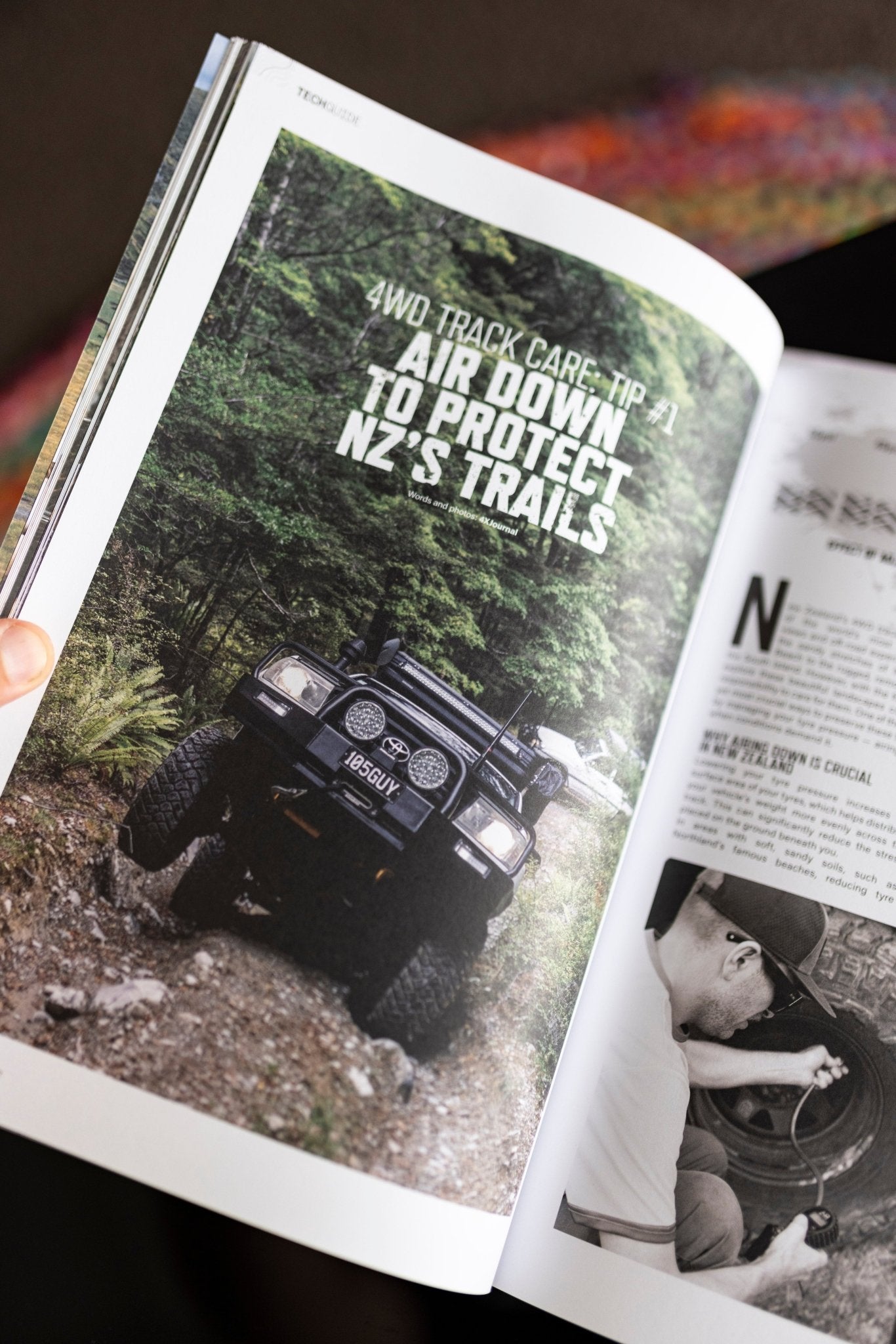
4WD track care: tip #1 — air down to protect NZ’s trails
Share
New Zealand’s 4WD tracks offer some of the world's most spectacular views and off-road experiences, from the sandy stretches of Ninety Mile Beach to the rugged, remote trails of the South Island. However, with the freedom to explore these beautiful landscapes comes the responsibility to care for them. One of the easiest yet most crucial ways to preserve these tracks is by managing your tyre pressure — airing down when conditions demand it.

Why airing down is crucial in New Zealand
Lowering your tyre pressure increases the surface area of your tyres, which helps distribute your vehicle’s weight more evenly across the track. This can significantly reduce the stress placed on the ground beneath you.
In areas with soft, sandy soils, such as Northland’s famous beaches, reducing tyre pressure prevents your vehicle from sinking and creating deep ruts. These ruts accelerate erosion and can quickly transform an easy track into a difficult one. Similarly, on muddy trails, like those found around Rotorua or the Coromandel, reducing pressure helps prevent your tyres from tearing up the surface and turning the track into a mess.
Protecting fragile ecosystems
In Aotearoa, many tracks traverse sensitive ecosystems, where even minor damage can have lasting effects. For instance, sand dunes are easily eroded by the deep tracks of vehicles with improperly inflated tyres. Forested trails can also suffer, especially where heavy rains make the ground softer and more prone to damage. You can help mitigate these effects by airing down, leaving less of a footprint. This simple act helps keep trails open for all enthusiasts by reducing the likelihood of track closures due to damage.
When and where to air down
Soft sand and mud 15–20psi
On beaches or muddy tracks, like those along Ninety Mile Beach or Woodhill Forest, lowering your pressure to around 15–20psi gives you the traction needed to avoid getting bogged down, while also spreading your vehicle's load. This prevents your tyres from digging in and creating channels that worsen with each vehicle that follows.
Rocky trails 18–22psi
In areas where the ground is littered with sharp rocks — such as the Waimakariri River bed or the rugged trails of the South Island’s high country — you’ll want to drop to about 18–22psi. This gives you better grip and flexibility, allowing your tyres to conform to the uneven surface. However, be mindful not to go too low, as this could lead to tyres popping off the bead on particularly rough or sharp sections.
Hard-packed roads 25–28psi
For firmer surfaces like gravel roads or clay-based trails, a slight reduction to 25–28psi can help traction without causing unnecessary wear and tear. This also helps smooth out the ride over loose gravel, giving you better control and stability.

The importance of an air compressor:
Always carry a portable air compressor so you can reinflate your tyres once you're back on sealed roads. Driving on underinflated tyres on tarmac can lead to excessive heat buildup, which can damage tyres and increase wear. Having the ability to air back up on the spot ensures you can keep your tyres at optimal pressure for both off-road and on-road conditions. Even the likes of your favourite retail parts store have great options (that’s all we use).
New Zealand–-specific track challenges
New Zealand’s unique, and often fragile, ecosystems mean that our 4WD tracks are particularly susceptible to damage. On coastal tracks, like those found along the Far North or the sandy stretches of Muriwai Beach, tyre pressure plays a crucial role in minimising impact. If tracks are churned up, they become more susceptible to wind and water erosion, accelerating the breakdown of these areas.

Clay and mud trails
Tracks through Rotorua’s forests or the clay-heavy terrain of the Coromandel are especially prone to becoming impassable after rain. Without adjusting tyre pressure, vehicles can create deep grooves that remain long after the mud has dried, making the track difficult for future vehicles and sometimes resulting in closures.

Community and DOC efforts:
Both the Department of Conservation (DOC) and local councils work tirelessly to maintain these tracks — but they can’t do it alone. Many community-driven 4WD clubs also contribute to keeping trails in good shape, often helping with repairs and upgrades. By taking simple steps like airing down, you’re not just protecting the track for your own use, but contributing to the preservation of a shared resource for the entire 4WD community.
Be smart, be safe
While airing down provides more grip and reduces environmental impact, it’s important to strike the right balance. Dropping your tyre pressure too low can cause the tyre to pop off the bead, especially on rocky or uneven terrain. This can also lead to sidewall damage if the tyres are too soft, leaving them more vulnerable to punctures from sharp rocks or debris.
Use a deflation gauge to ensure you’re dropping to the right pressure for the terrain. It’s better to be precise than to guess, as incorrect pressure could put both your tyres and the track at risk. Additionally, make sure to reinflate your tyres before returning to the open road. Not doing so can result in poor handling, increased tyre wear, and even accidents.

Protecting New Zealand’s 4WD legacy
From the sweeping sands of the Far North to the rocky, high country trails of Otago, New Zealand’s 4WD scene is unparalleled. However, with such privilege comes the duty to ensure these landscapes remain accessible for future generations.
By airing down, you’re helping to protect not just the trail beneath your wheels but the entire 4WD community’s right to explore these unique environments. Each time you take the time to adjust your tyre pressure, you’re making sure that future adventurers can experience these tracks in their natural, unspoiled state.
Let’s all do our part to keep New Zealand’s 4WD tracks in great condition, so we can continue to enjoy them for many years to come.









